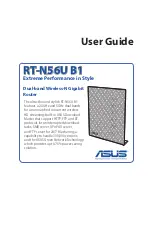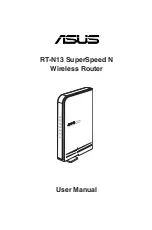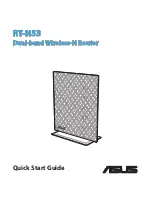
Configuring Mesh Networking
9-5
9.1.3 Defining the Mesh Topology
When a user wants to control how the spanning tree determines client bridge connections, they need
to control the mesh configuration. The user must be able to define one node as the root. Assigning a
base bridge the lowest bridge priority defines it as the root.
The access point can manipulate the path cost assigned to a bridge connection based on that
connection’s RSSI. This results in the spanning tree selecting the optimal path for forwarding data
when redundant paths exist. However, this can be overridden using the preferred list. When using the
preferred list, the user enters a priority for each bridge, resulting in the selection of the forwarding
link.
Limit the wireless client’s connections to reduce the number of hops required to get to the wired
network. Use each radio’s "preferred" base bridge list to define which access points the client bridge
connects to. For more information, see
Configuring Mesh Networking Support on page 9-6
.
9.1.4 Mesh Networking and the AP-51xx’s Two Subnets
The access point now has a second subnet on the LAN side of the system. This means wireless clients
communicating through the same radio can reside on different subnets. The addition of this feature
adds another layer of complexity to the access point’s mesh networking functionality.
With a second LAN introduced, the LAN’s Ethernet port (and any of the 16 WLANs) could be assigned
to one of two different subnets. From a layer 2 perspective, the system has two different bridge
functionalities, each with its own STP. The WLAN assignment controls the subnet (LAN1 or 2) upon
which a given connection resides. If WLAN2 is assigned to LAN1, and WLAN2 is used to establish a
client bridge connection, then the mesh network connection resides on LAN1.
Therefore, (depending upon the WLAN-to-LAN mapping), the access point could have multiple mesh
connections on either LAN1 or LAN2.
NOTE
Motorola recommends using the
Mesh STP Configuration
screen to
define a base bridge as a root. Only advanced users should use the
Advanced Client Bridge Settings screen’s Preferred List to define the mesh
topology, as omitting a bridge from the preferred list could break
connections within the mesh network.
Summary of Contents for AP-51 Series
Page 1: ...AP 51xx Access Point Product Reference Guide ...
Page 3: ...AP 51xx Access Point Product Reference Guide 72E 124688 01 May 2009 ...
Page 4: ......
Page 16: ...AP 51xx Access Point Product Reference Guide xiv ...
Page 80: ...AP 51xx Access Point Product Reference Guide 2 32 ...
Page 96: ...AP 51xx Access Point Product Reference Guide 3 16 ...
Page 158: ...AP 51xx Access Point Product Reference Guide 4 62 ...
Page 238: ...AP 51xx Access Point Product Reference Guide 5 80 ...
Page 318: ...AP 51xx Access Point Product Reference Guide 6 80 ...
Page 636: ...AP 51xx Access Point Product Reference Guide 9 22 3 Define a mesh supported WLAN ...
Page 649: ...Configuring Mesh Networking 9 35 3 Determine the Radio MAC Address and BSSID MAC Addresses ...
Page 679: ...Adaptive AP 10 25 line con 0 line vty 0 24 end ...
Page 680: ...AP 51xx Access Point Product Reference Guide 10 26 ...
Page 692: ...AP 51xx Access Point Product Reference Guide A 12 ...
Page 716: ...AP 51xx Access Point Product Reference Guide C 4 ...
Page 722: ...AP 51xx Access Point Product Reference Guide IN 10 ...
Page 723: ......
















































